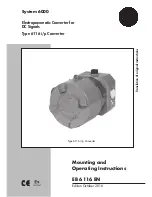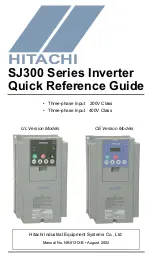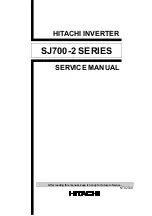
2 Installation
2.1 Type A/F Encoder, standalone
Reference: Figure 1
2.1.1 Recommended equipment and tools:
•
Standalone A/F Encoder
•
Float pulley, float and counterweight
•
Float tape or beaded float line with end hooks
•
Screwdriver or wrench, as required to install Encoder on mounting surface
•
Flat-bladed screwdriver for connecting wires to data logger connector
•
1/2 inch socket wrench for hex nut on float pulley shaft
•
Tools required for cutting clearance holes in mounting surface for float tape or line, and for cutting
stainless steel float tape or line
•
Guide pulley and mounting hardware, if used
•
Four 1/4 inch (6 mm) diameter mounting screws or machine screws and nuts
•
Associated Logger and recommended tools for installation
2.1.2 Installation procedure
a. Mount the float pulley on the Encoder. Remove the clamping hardware from the input shaft and install
parts in the following order:
•
The float pulley
•
The cupped washer (cupped side toward the Encoder)
•
The clamping disc; tighten the right and left-hand clamping screws evenly against the cupped
washer in the directions indicated by the stamped arrows
•
The hex nut; tighten moderately with a socket wrench
b. Position the Encoder so that when the float tape or line is connected to the float and counterweight,
they will freely pass each other and the sides of the stilling well throughout the operating range.
c. Mark the locations of the mounting hardware on the mounting surface, through the (4) holes in the
mounting flanges. Also mark the (2) clearance holes on the mounting surface where either float tape or
line would hang straight down off the sides of the float pulley. This will work for small pulleys, such as 18
inch or 375 mm. With larger pulleys, it may be necessary to cut a slot to clear the float pulley. Also
determine the location of the guide pulley, if used.
8






























